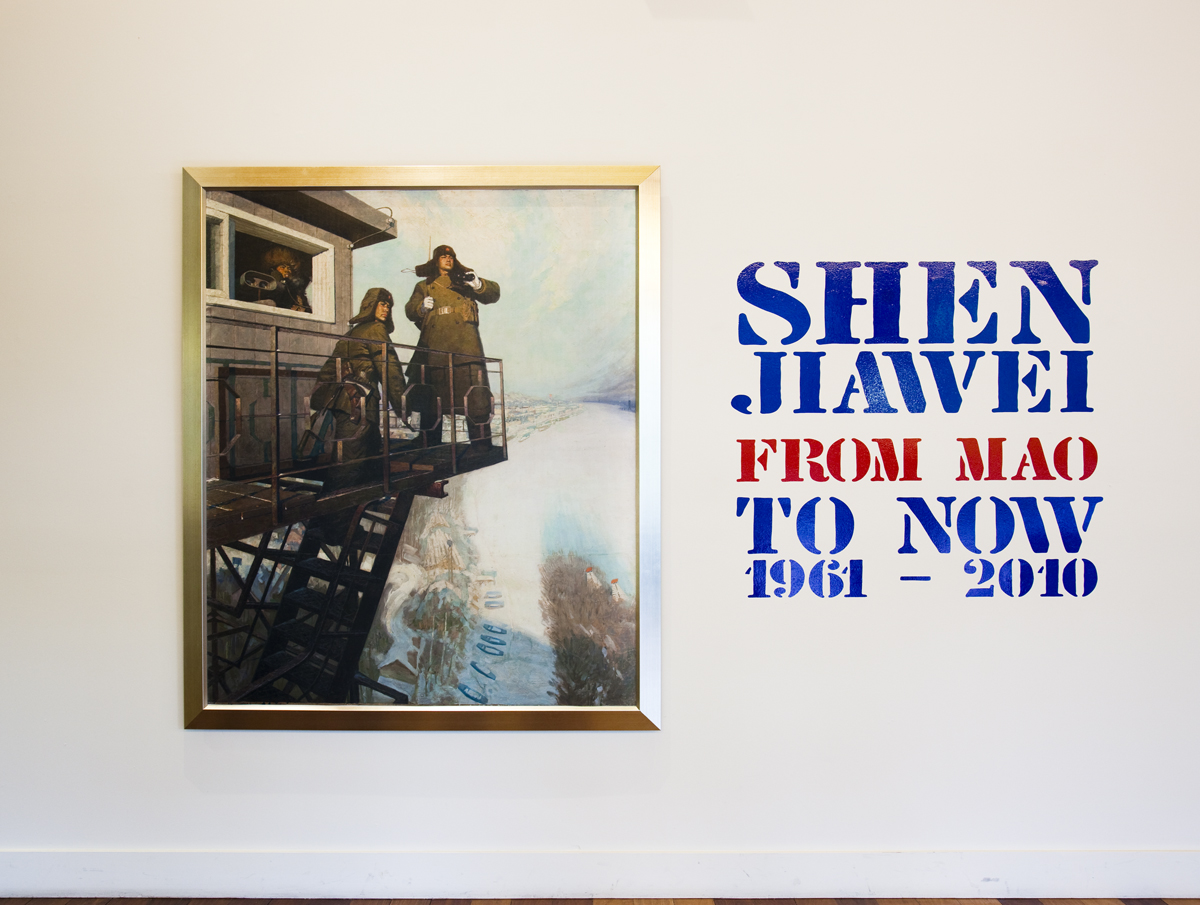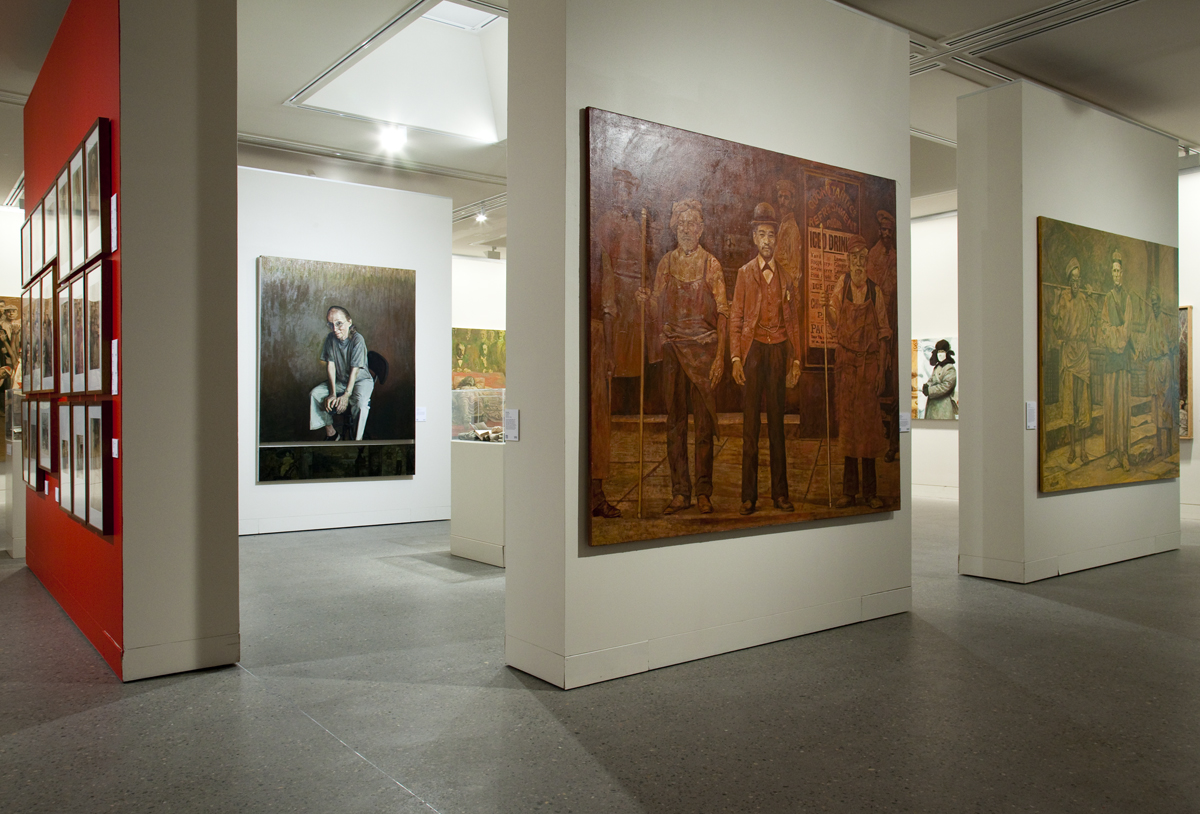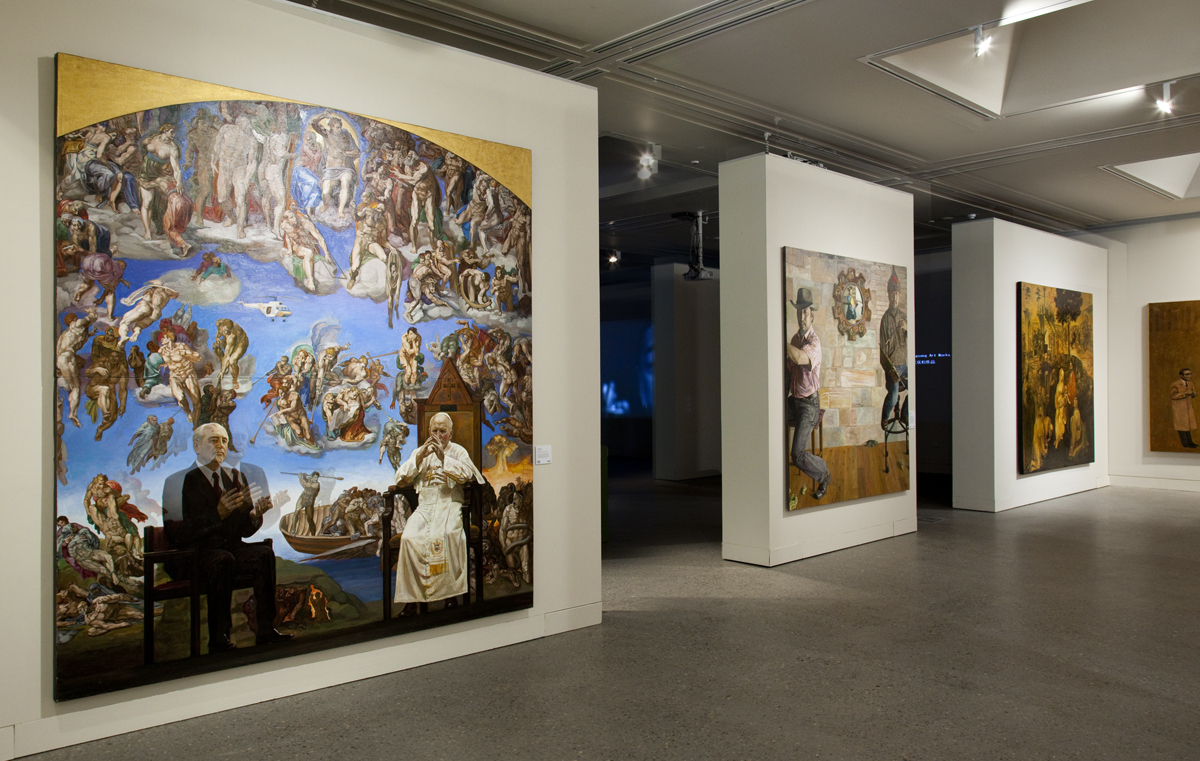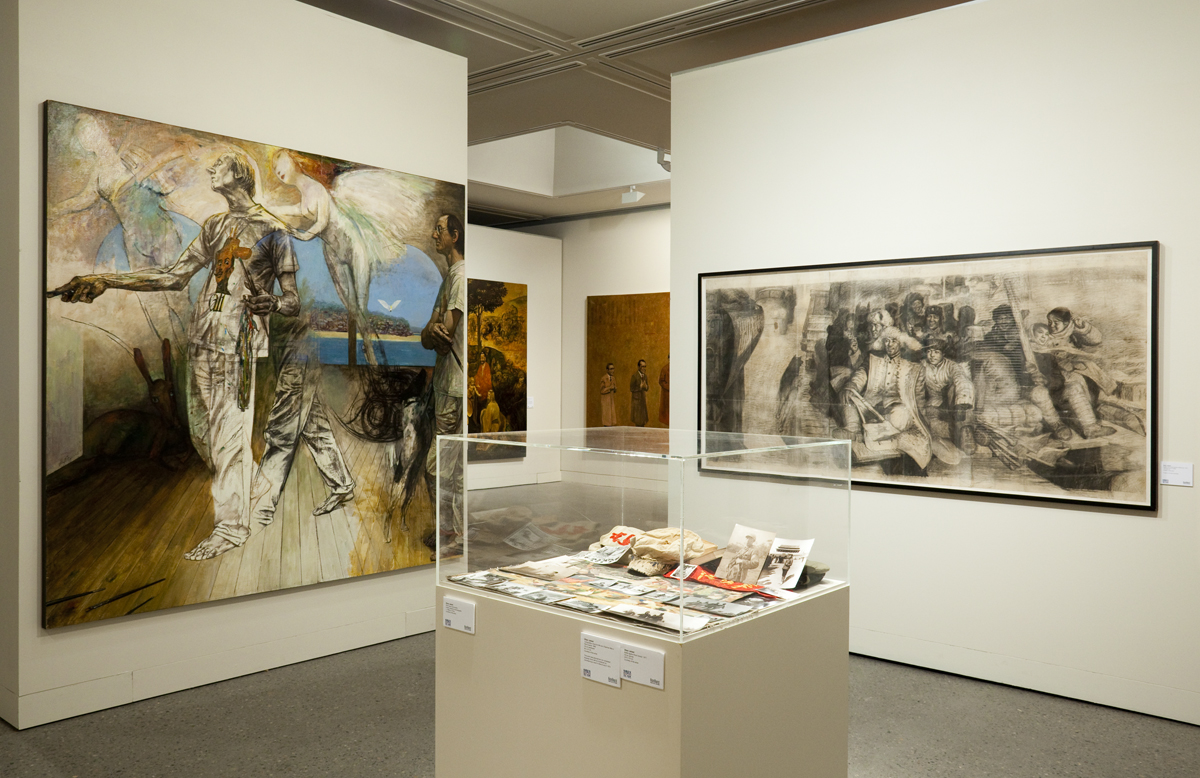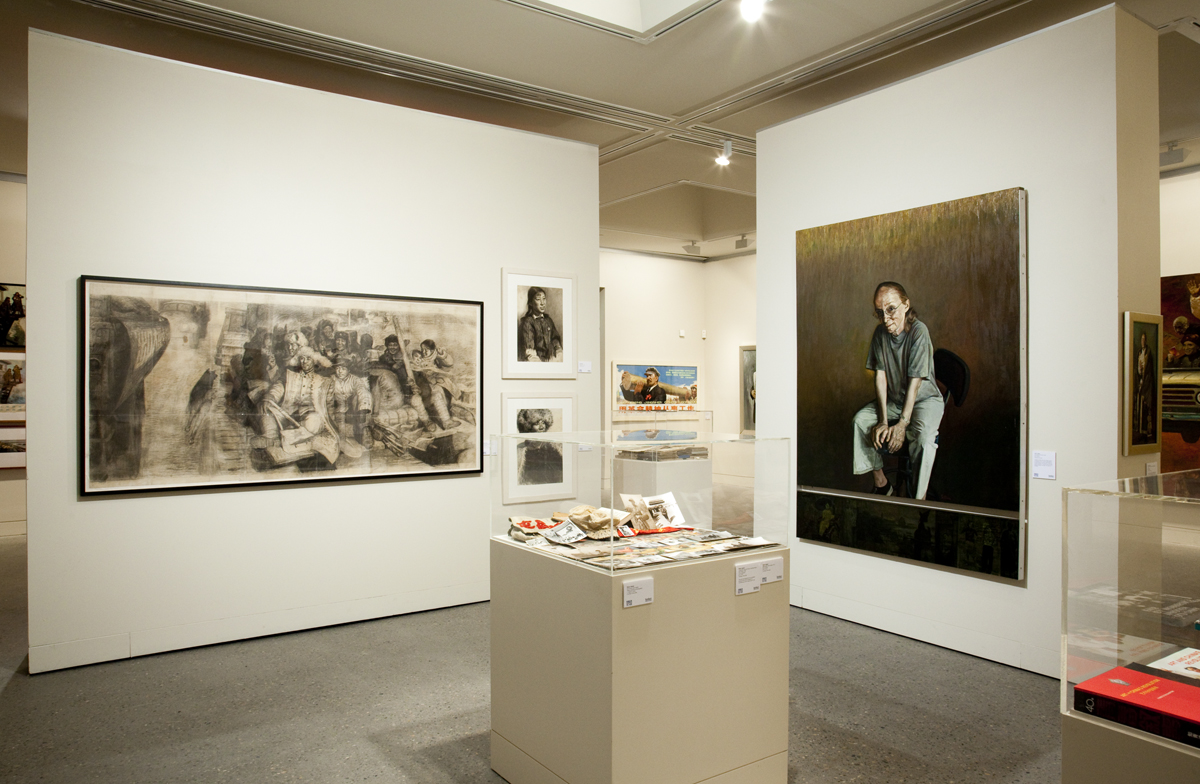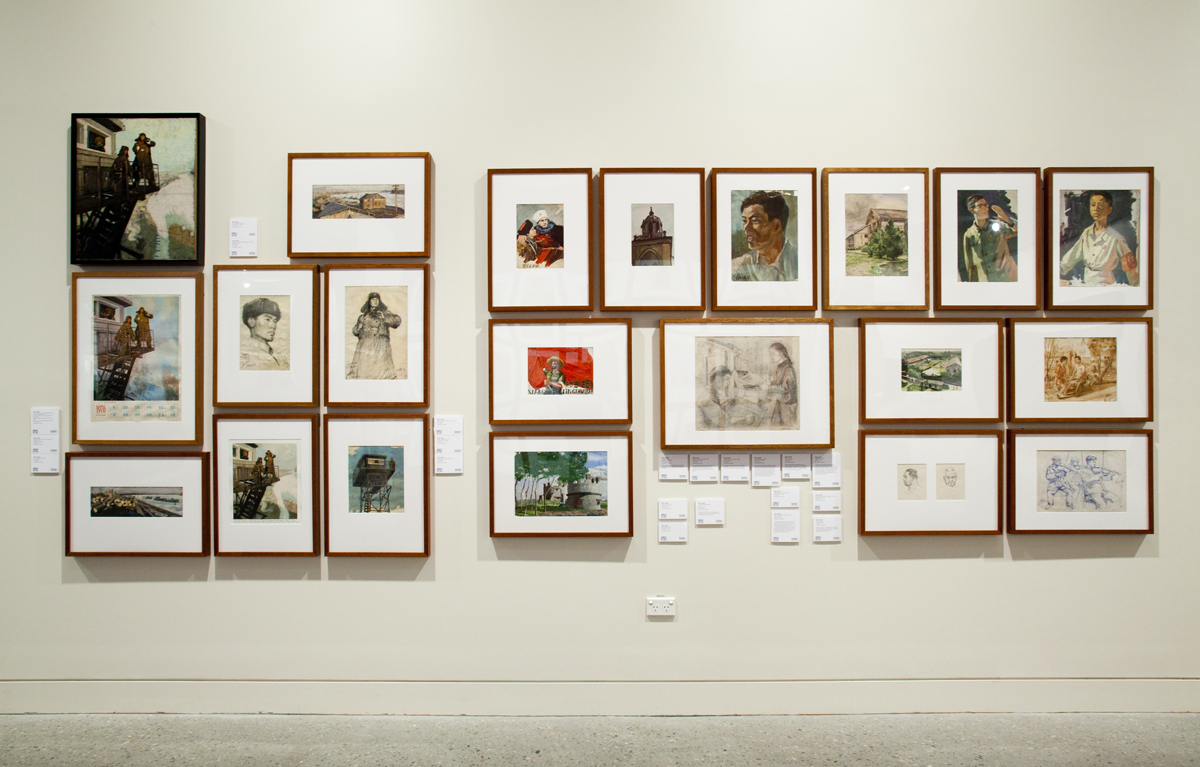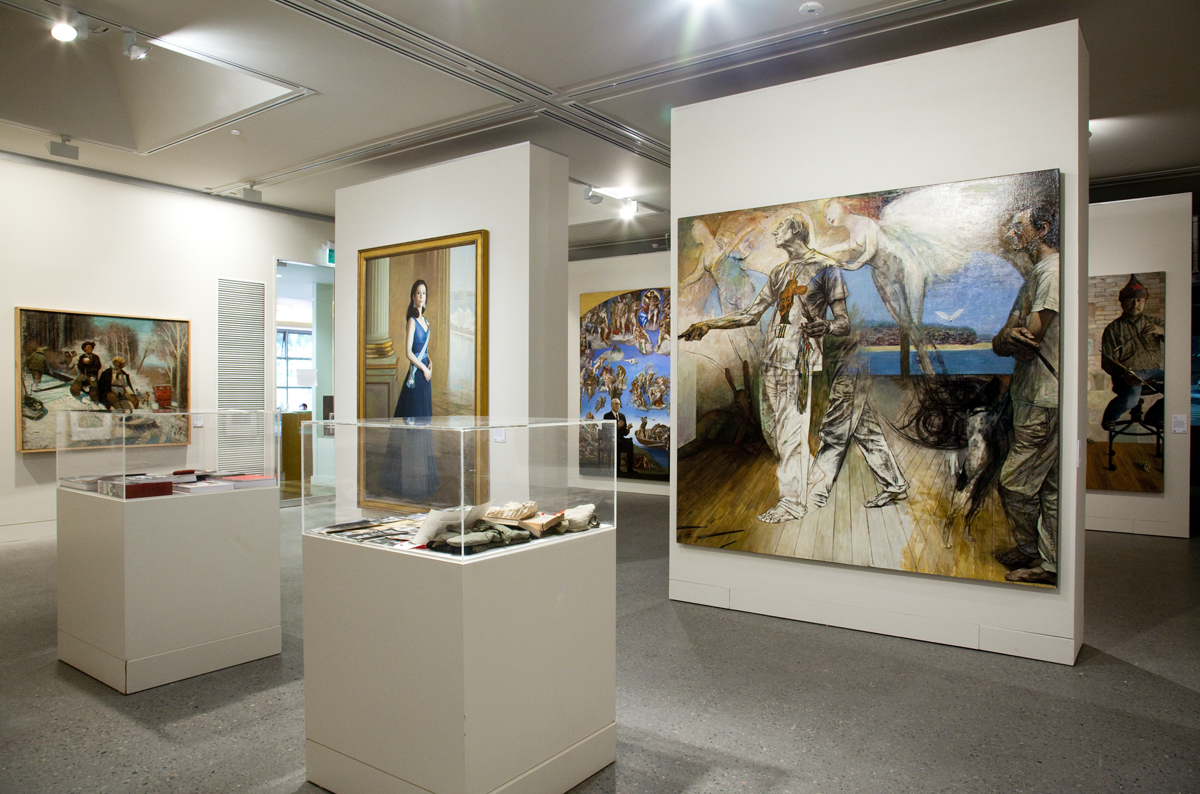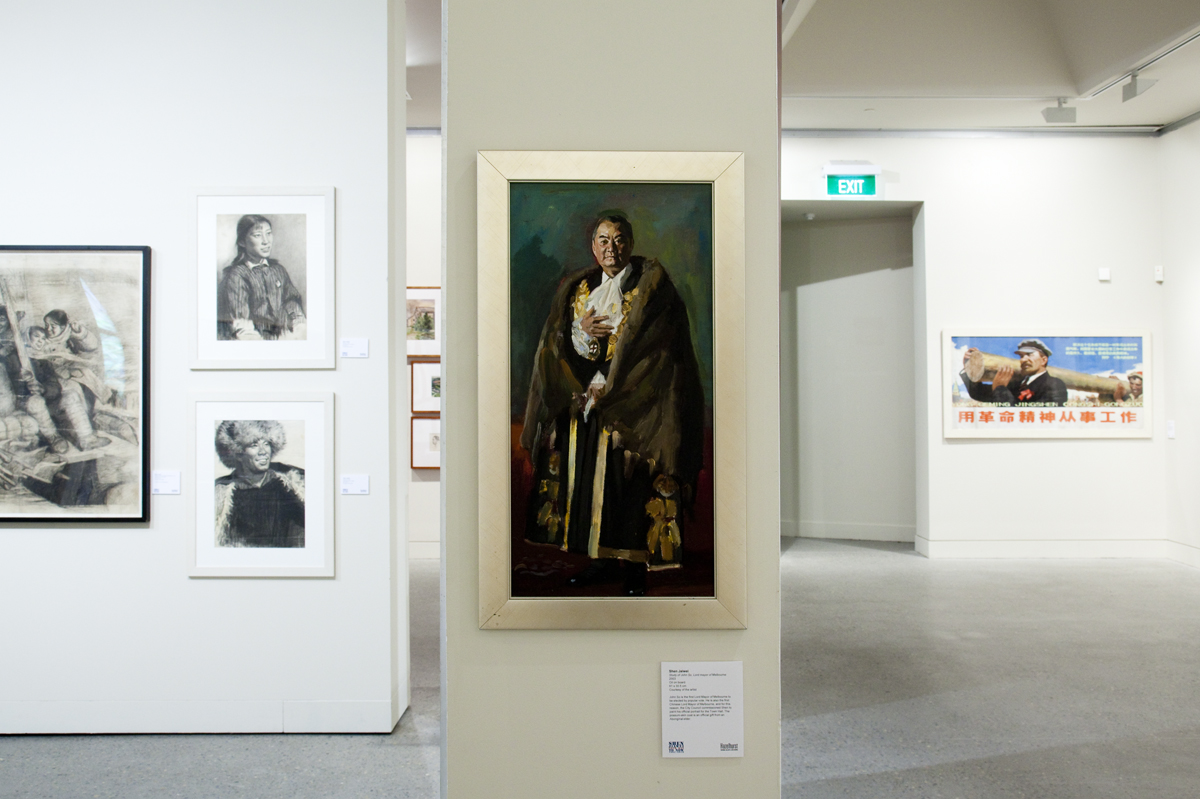16 October 2010 to 28 November 2010
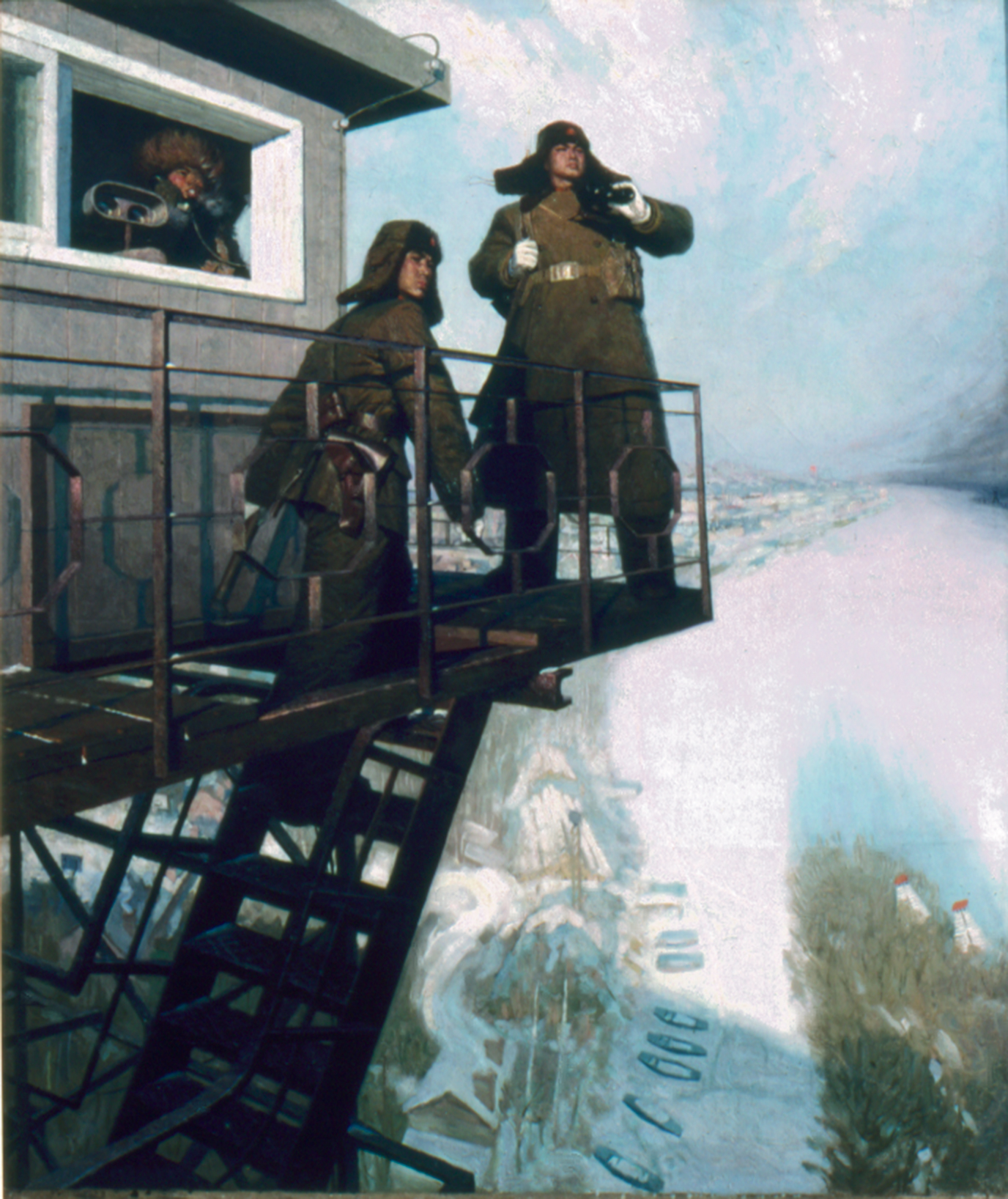 Image: Shen Jiawei Standing Guard for Our Great Motherland, 1974, oil on canvas. Private collection, China.
Image: Shen Jiawei Standing Guard for Our Great Motherland, 1974, oil on canvas. Private collection, China.
Born in Shanghai in 1948, Shen’s career began in China during the tumultuous Cultural Revolution, when the role of artists was to produce material that promoted its cause. As a member of the Communist youth, Shen was swept up in the wave of events, which would test his political commitments while shaping an artistic vision that would last well after the Cultural Revolution.
With the closure of all educational institutions during the Cultural Revolution, Shen had no formal training at the time he completed one of his most notable works Standing Guard for Our Great Motherland in 1974. It was only from 1982 to 1984 that the artist honed his skills at the Central Academy of Fine Arts In Beijing. The 1980’s saw the production of several more important works, including the eleven-metre canvas Red Star over China (1987) which portrays more than a hundred figures of historic importance and reflected his growing desire to cut through the layers of propaganda and show the past in a new light. His great liberalist painting Tolerance (1988) included portraits of sixteen leading figures from the May Fourth Movement that promoted the cause of Chinese Nationalism in 1919. By this time, China’s democracy movement was on the rise and a crisis was imminent.
Shen emigrated to Australia in 1989, shortly before the Tiananmen Square incidents. To survive financially, he spent the first three years in Australia drawing portrait sketches for tourists at Darling Harbour. Today, he is regarded as one of Australia’s leading portrait artists known for the academic and literary qualities of his work. His many accomplished portrait commissions include Princess Mary of Denmark, former Prime Minister John Howard and a host of other well-known figures.
While portraiture has provided an income and a degree of local fame for Shen, it is secondary to what he feels is his life’s pressing ambition - large-scale history painting in various forms. One such work, The Third World (2002), includes 92 separate portaits of ‘third world’ political heroes and villains and makes comment on the bottomless complexities of politics and inadequate ideologies. An even larger scale commissioned work was commenced in 2008 with the nine-metre painting Merdeka (AKA. ‘Freedom’). After many months of work, and collaboration with his wife Lan Wang and friend Wang Xu, the epic canvas encapsulating the entire history of Malaysia in 261 separate portraits was complete.
Shen’s extraordinary productivity is sustained by the pleasure he derives from his work and the intellectual exercise that each one represents. Every picture is a reflection on historical and political matters, drawing unexpected parallels between present and past. He lives in Sydney’s south at Bundeena with his family now, a lifestyle far removed from his early formative experiences, Shen continues to explore these central themes of his work.
Curated by Grahame Kime.

